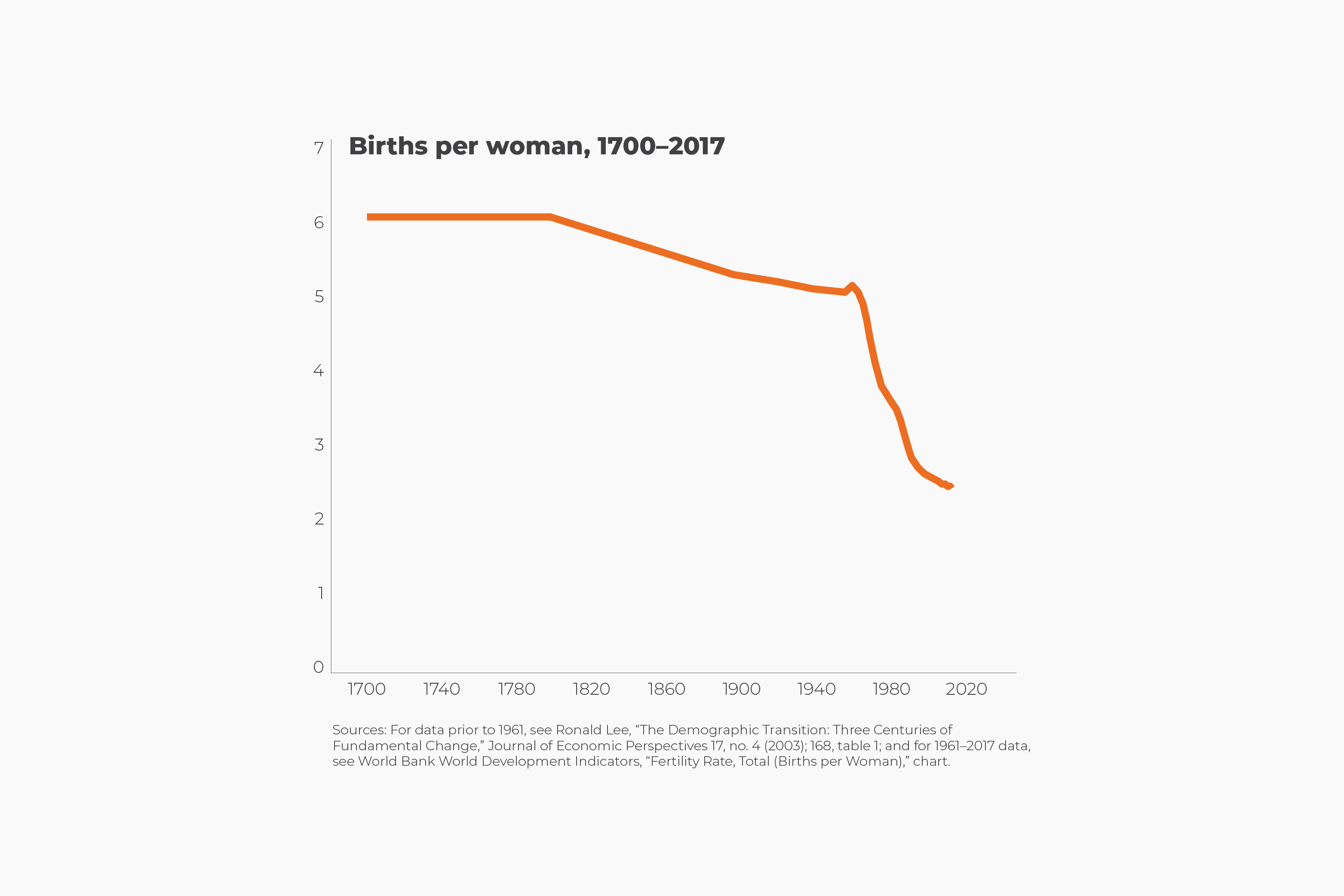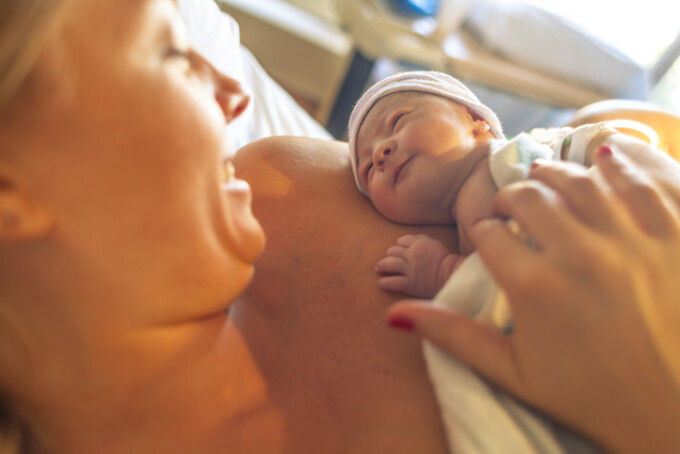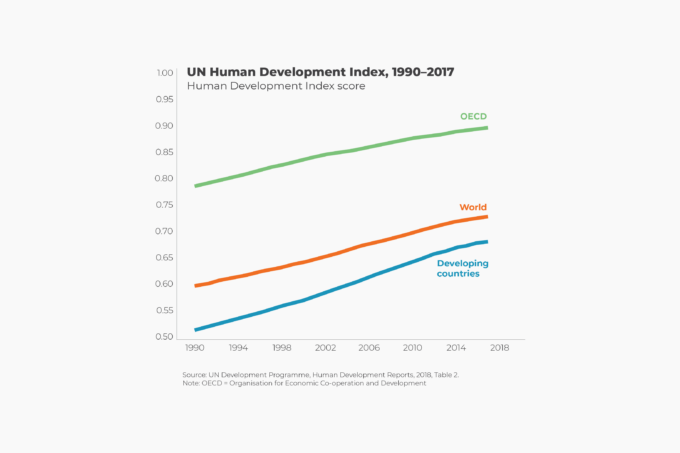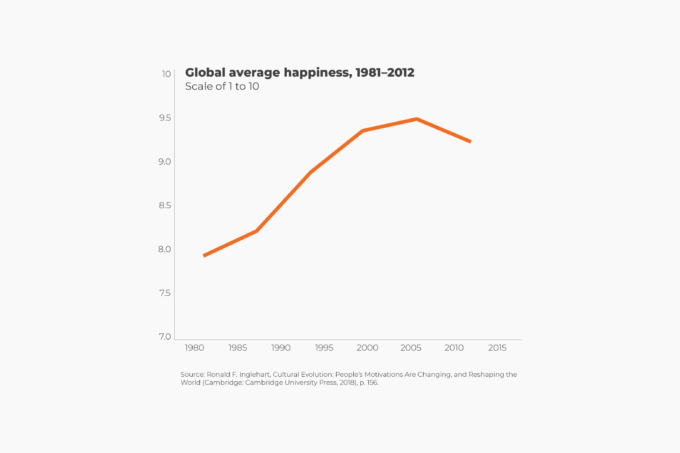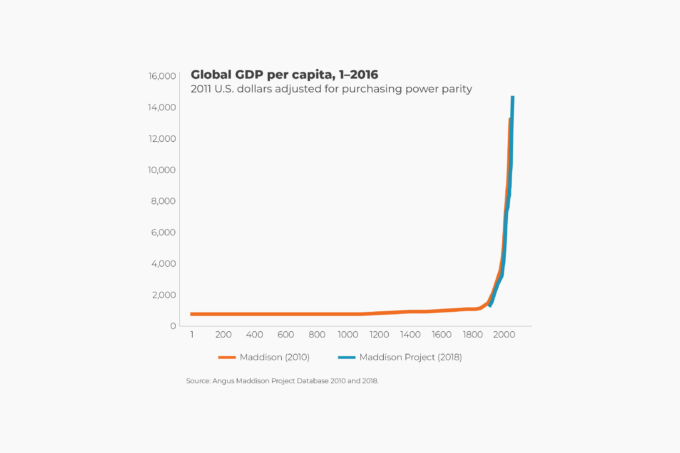The world population grew from 1.6 billion in 1900 to 7.7 billion in 2019, not because people are breeding like rabbits but because they are no longer dropping like flies.
Most women gave birth to an average of six to eight children throughout most of human history. Despite those high fertility rates, the world population increased very slowly because of high death rates. Until the 19th century, nearly 60 percent of children died from disease, starvation, or violence before reaching adulthood.
The death rate for children begins dropping in the 19th century in some Western countries where medicine, sanitation, and nutrition improved, and economic growth accelerated. Although their mortality rates were falling, their fertility rates for a time remained high. The result was a period of rapid population increase. By the mid-20th century, most developed countries had experienced the “demographic transition” from high birth and death rates to low birth and death rates.
By the second decade of the 21st century, most countries have already passed through their demographic transitions or are well on the way to doing so.
University of Connecticut anthropologists Nicola Bulled and Richard Sosis report that when women can expect to live to between 40 and 50 years of age, they bear an average of 5.5 children. When their life expectancy rises to between 61 and 71 years, total fertility drops to 2.5 children; and over an average lifespan of 75 years, women average 1.7 children. Longer female life expectancy is a powerful indication of improved economic and social conditions. Thus, more women choose to have fewer children because they reasonably expect most of their children will survive to adulthood.
Education and productive work outside the home also reduce fertility. Schooling opens more options for women, while market employment increases women’s opportunity cost of taking care of children. Female life expectancy exceeds 75 years in all but 2 (Bhutan and North Korea) of the 87 countries with below-replacement fertility. Demographers generally define replacement fertility as an average of 2.1 children born per woman. At this rate, a population can replace itself from one generation to the next without migration from other countries.
Global fertility rates plummeted from 5 in 1960 to 2.43 children today as global average life expectancy for women increased from 53 to 72 years. The global fertility rate will continue falling as more women can anticipate living longer and more interesting lives.

